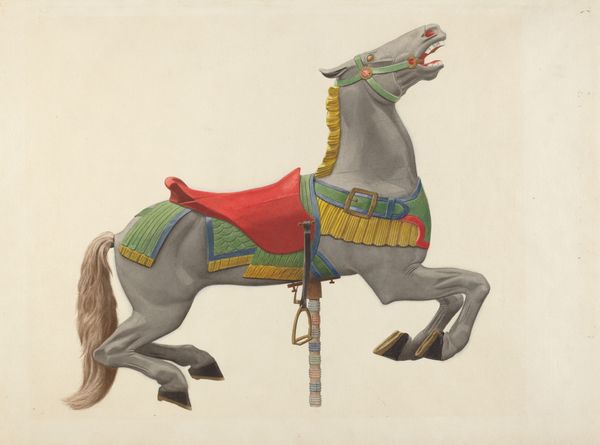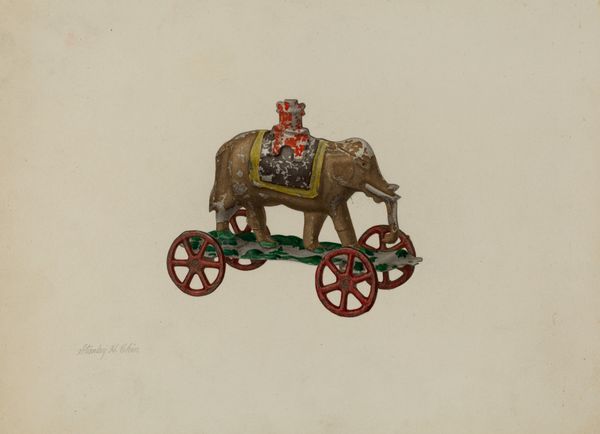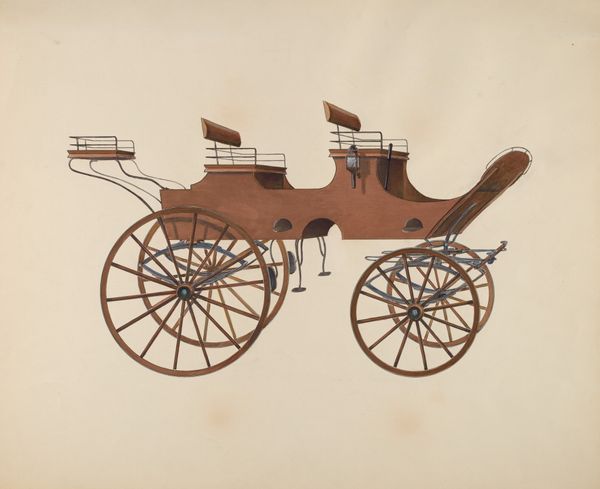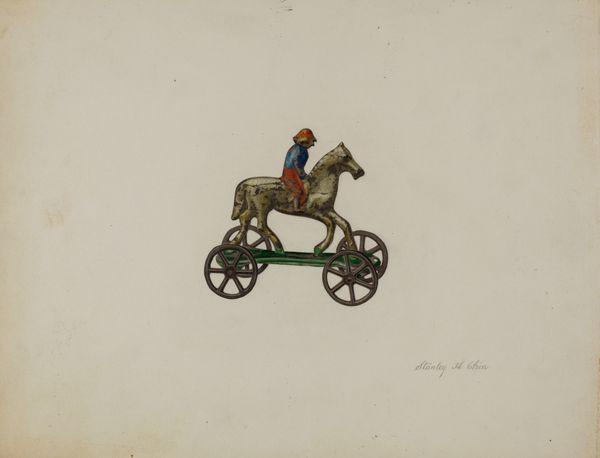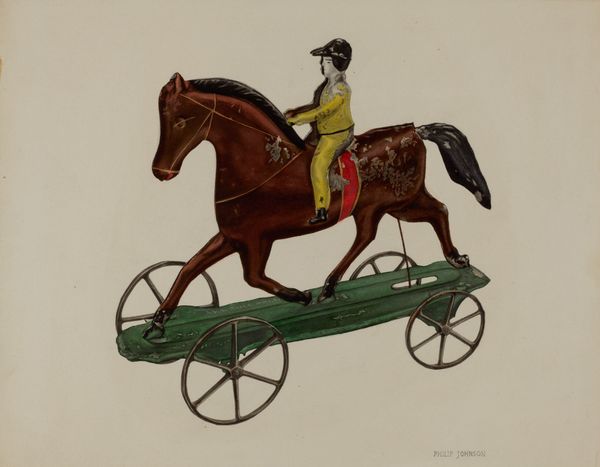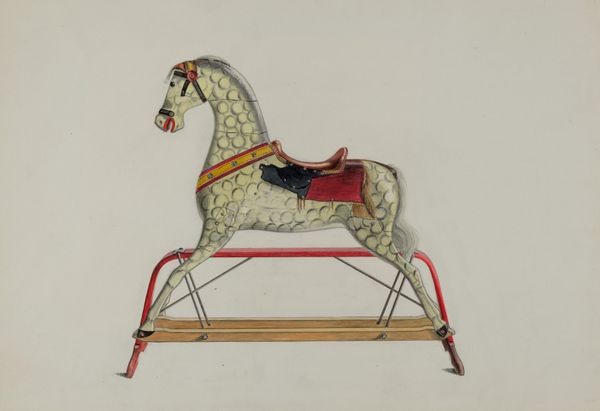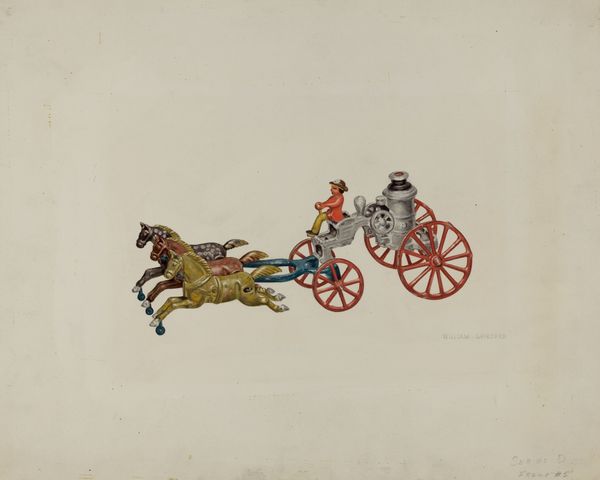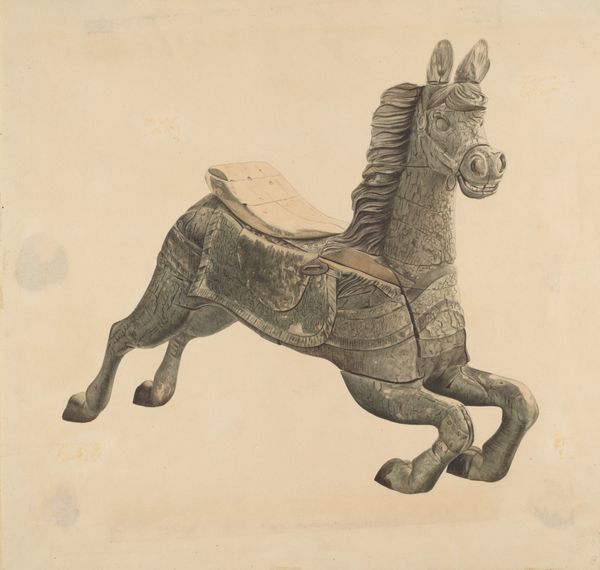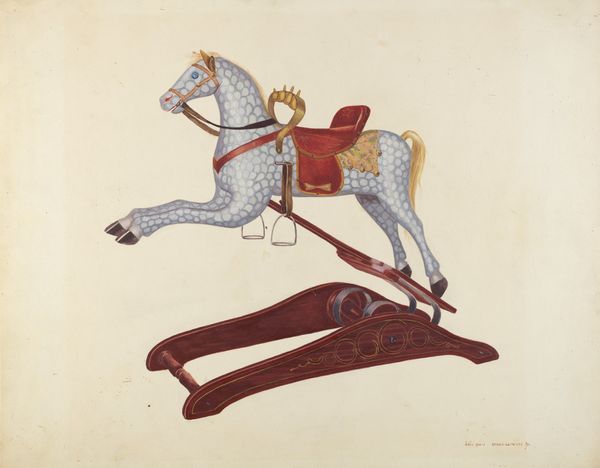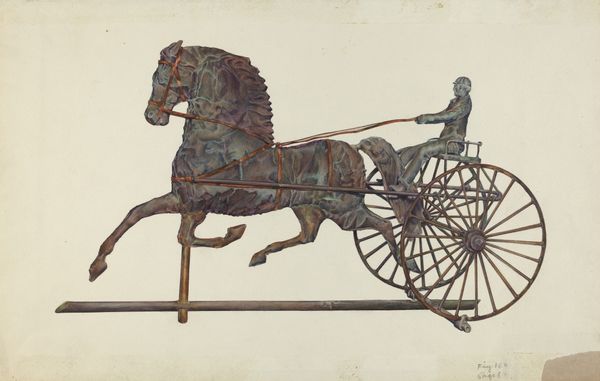
drawing, coloured-pencil
#
drawing
#
coloured-pencil
#
caricature
#
caricature
#
coloured pencil
#
genre-painting
#
realism
Dimensions: overall: 32.6 x 41.6 cm (12 13/16 x 16 3/8 in.)
Copyright: National Gallery of Art: CC0 1.0
Curator: Before us is “Trotter in Action,” a colored-pencil drawing by Henry Murphy, likely created sometime between 1935 and 1942. Editor: Well, immediately I'm struck by the stilted nature of the drawing. The color palette—those subdued browns and reds—gives it a kind of antiquated charm, like a memory fading at the edges. Curator: Interesting observation. What stands out to me is Murphy's handling of form. Observe the sharp delineation between light and shadow. The hatching technique used to define the horse’s musculature is particularly effective at conveying mass. Editor: Yes, the almost architectural treatment of the horse. I think we need to consider the cultural resonance of the trotter. Beyond just representing a mode of transport or entertainment, the trotter embodied values of the period such as progress and efficiency. Curator: Perhaps. Though, I'm hesitant to ascribe overly symbolic meanings. Looking at the figure again, one could argue that the seemingly simplified composition cleverly juxtaposes curved versus hard edges throughout. Look at the roundness of the horse, balanced against the flat hat on the sulky rider. It really emphasizes shape. Editor: I think Murphy is pointing towards a symbolic depiction of time by including elements such as the horse and buggy – something seen as more outdated with the mass manufacturing of cars becoming the preferred method of transportation. Curator: Ultimately, interpretations depend on one’s frame of reference. “Trotter in Action” offers us an opportunity to study technique, the structural choices Murphy used in composing the scene and representing space. Editor: Or the social ideals it evokes in us as viewers, whether those ideals are based in memory or historical reflection. What we glean is perhaps always, inevitably, a mirror of our own time.
Comments
No comments
Be the first to comment and join the conversation on the ultimate creative platform.

